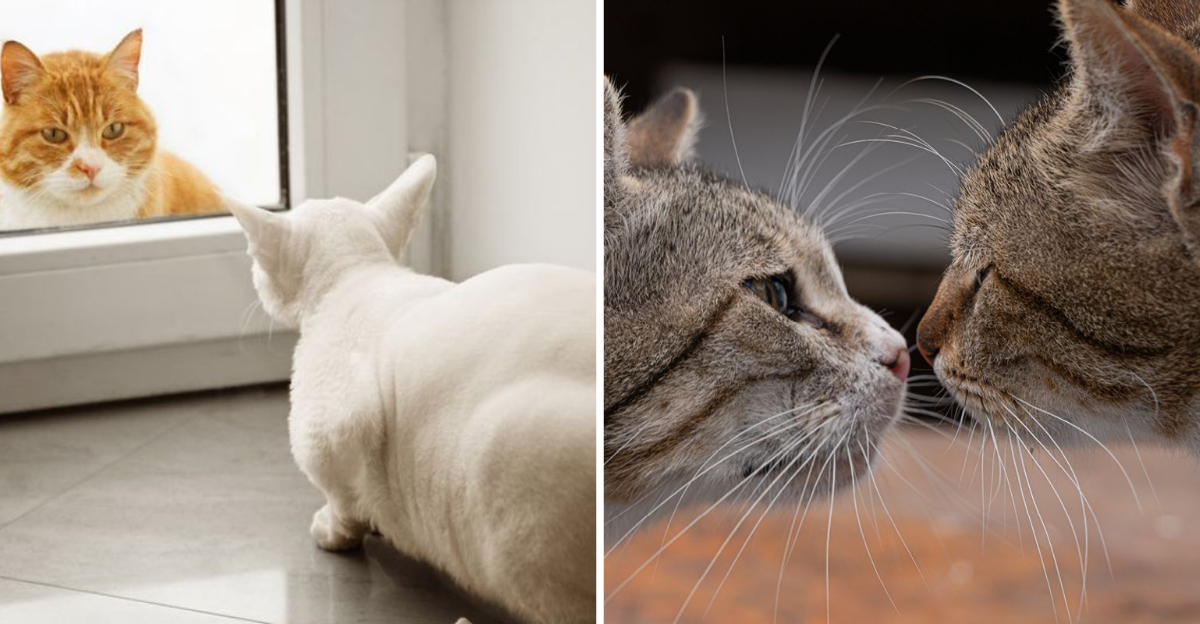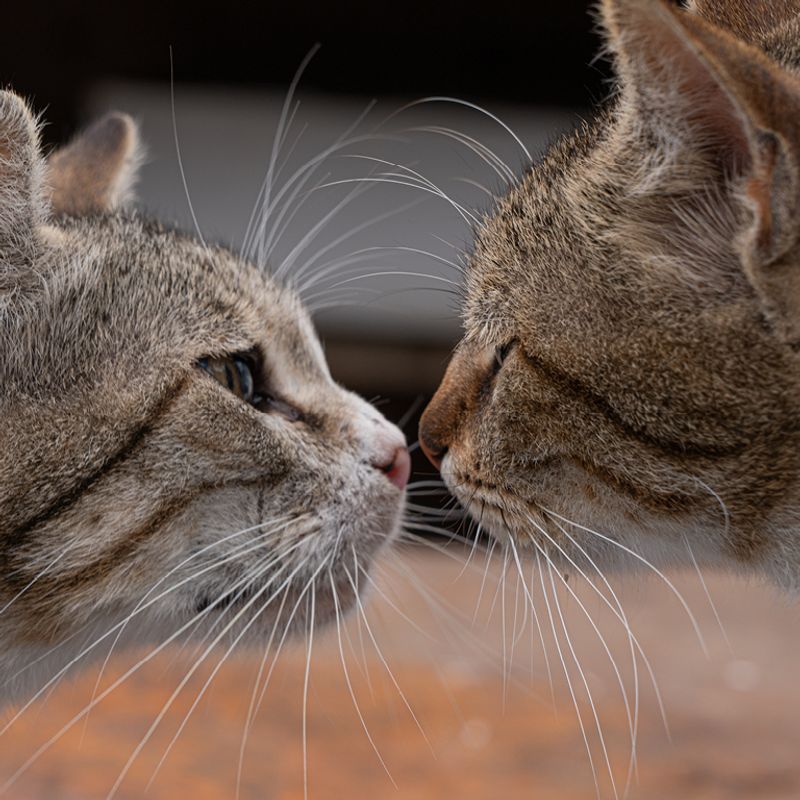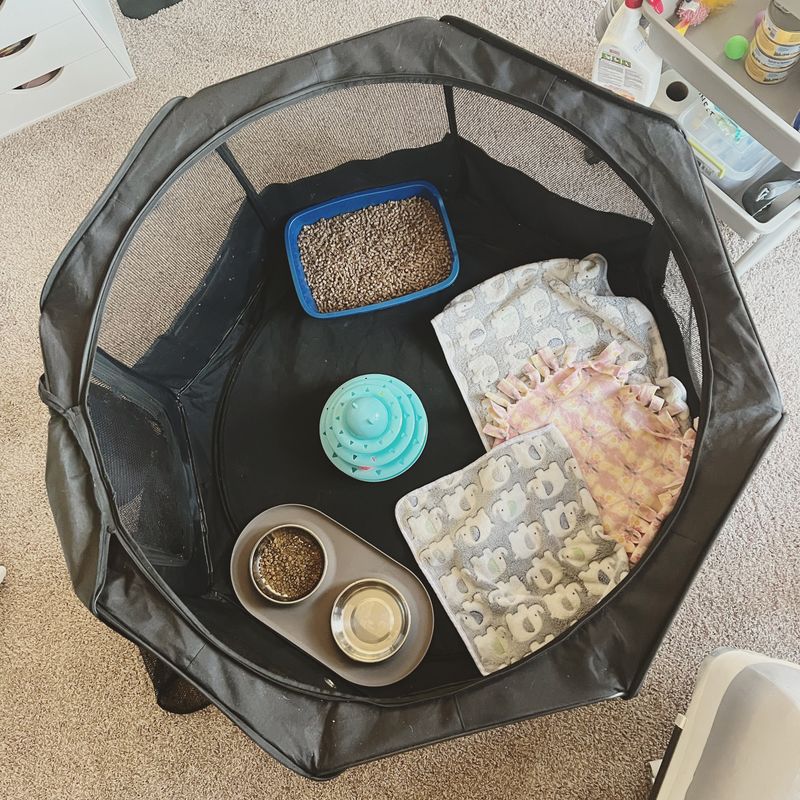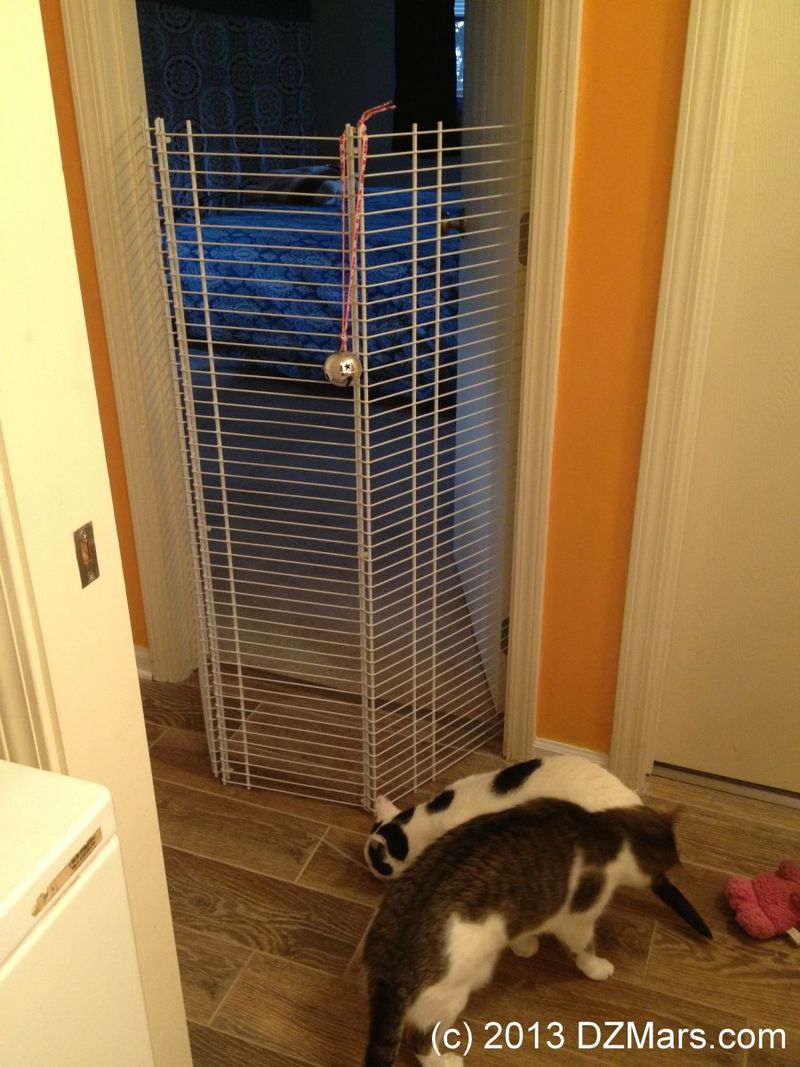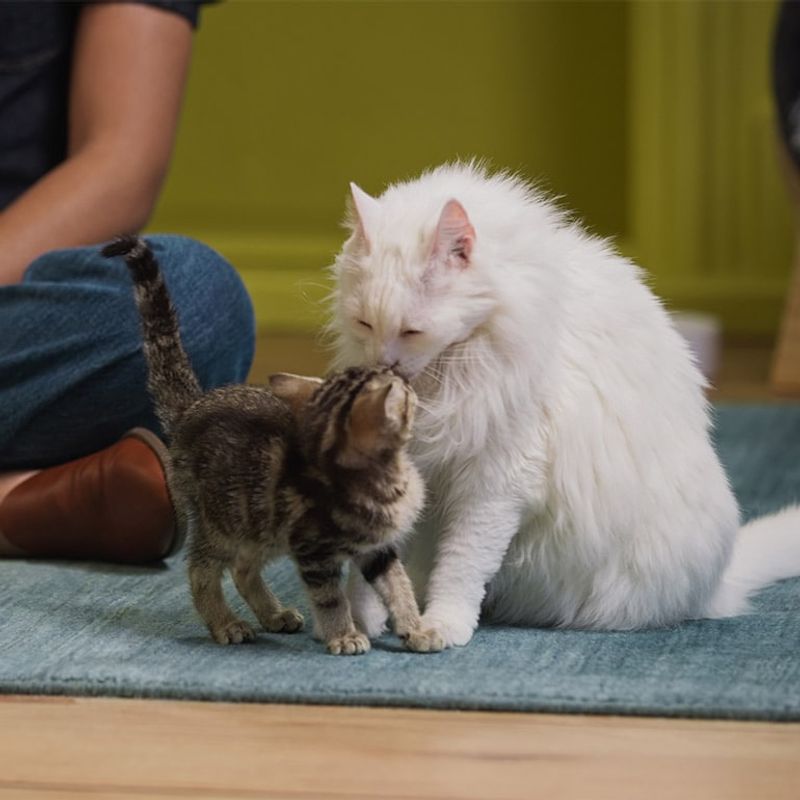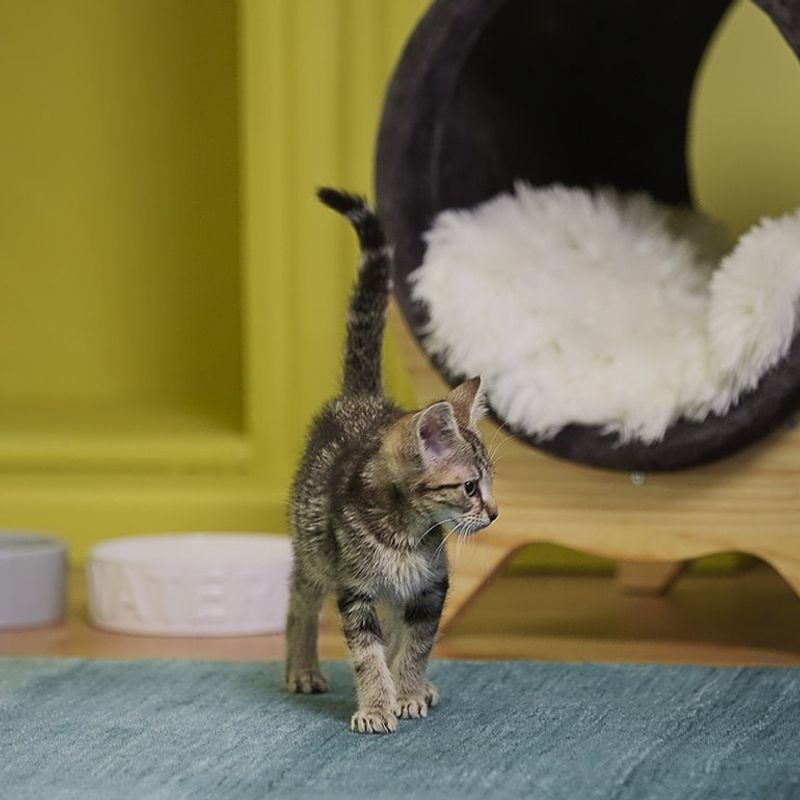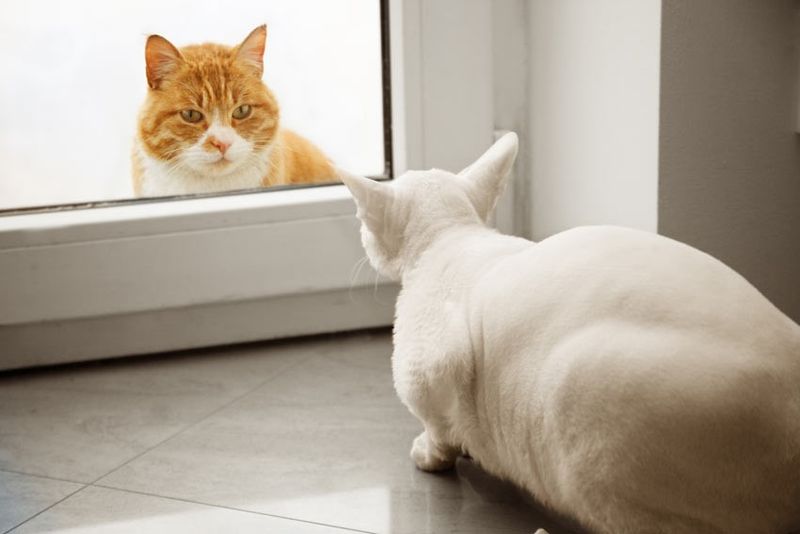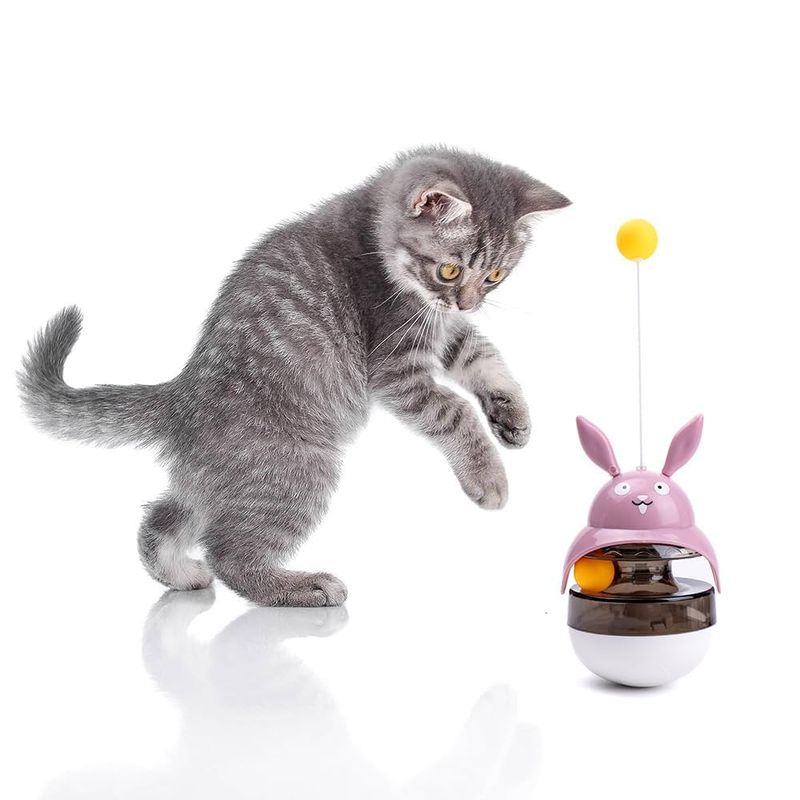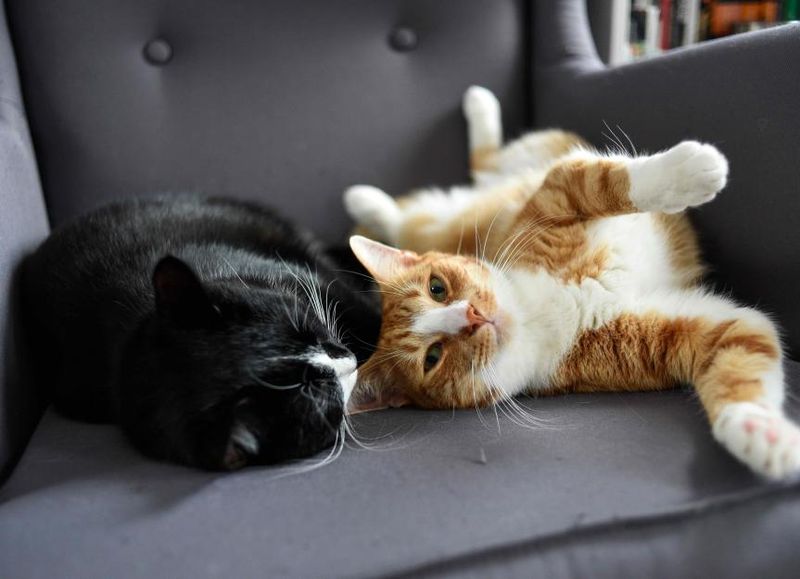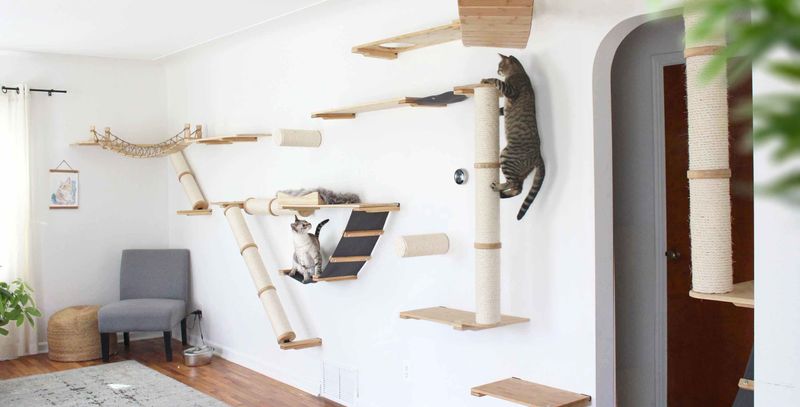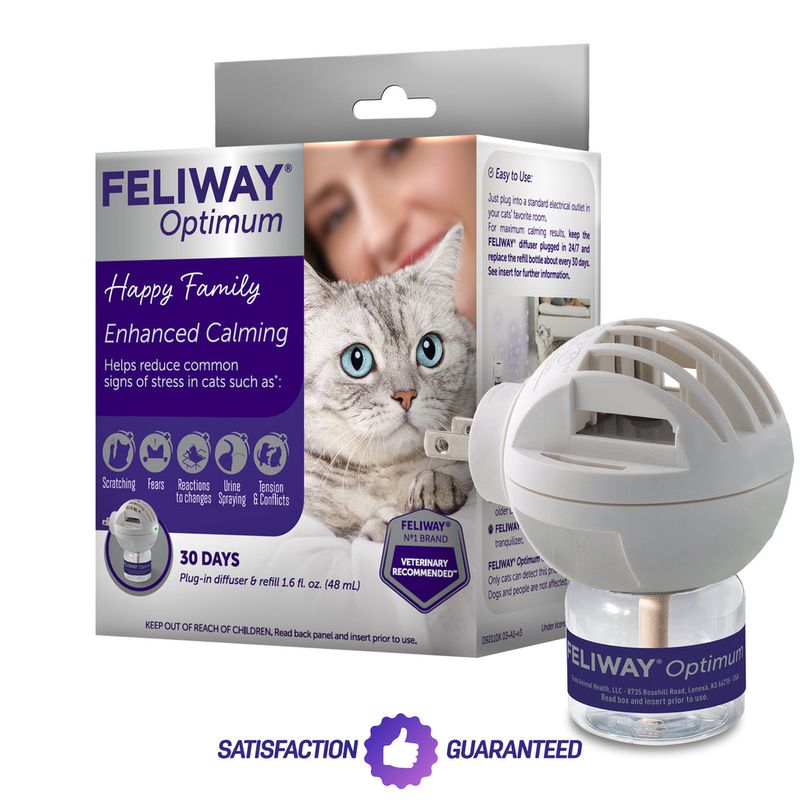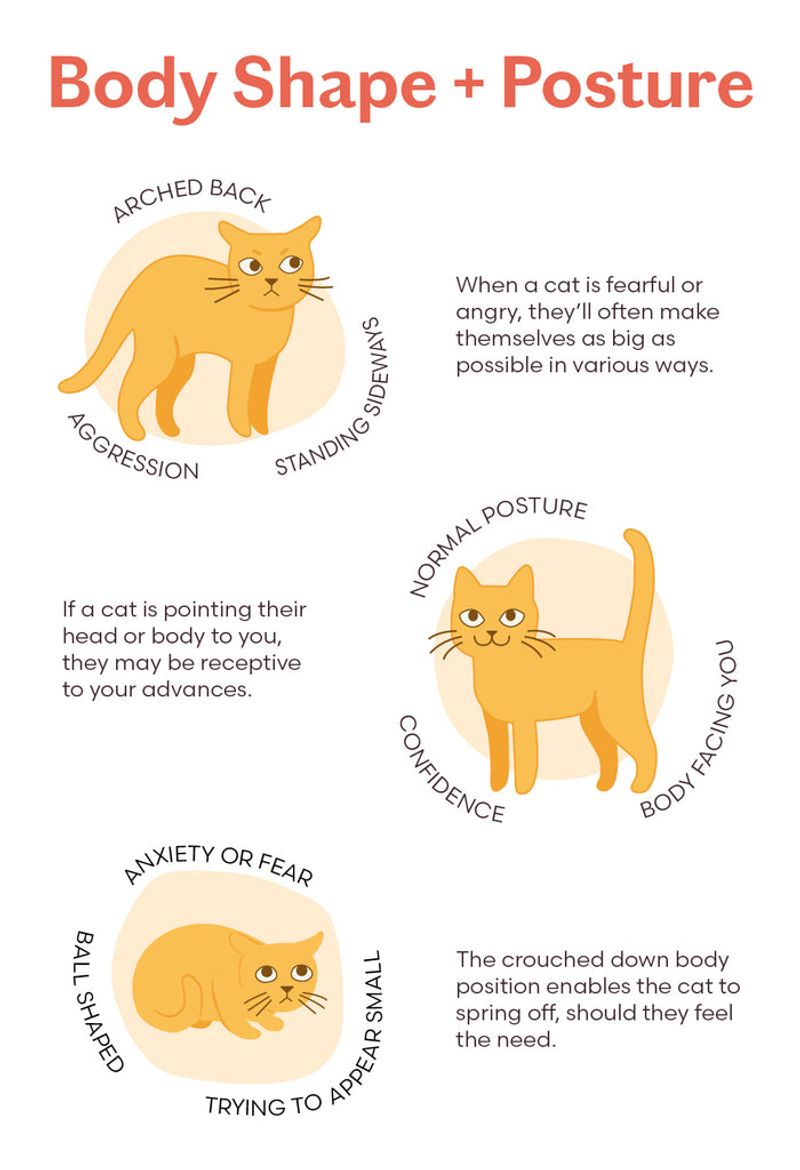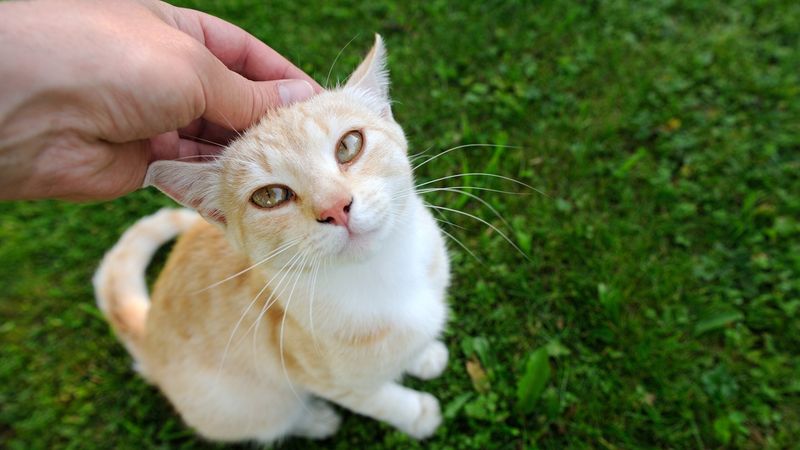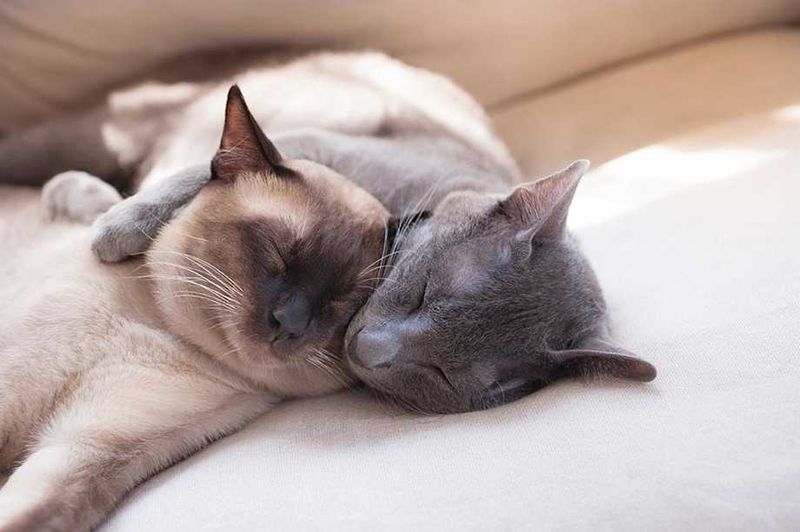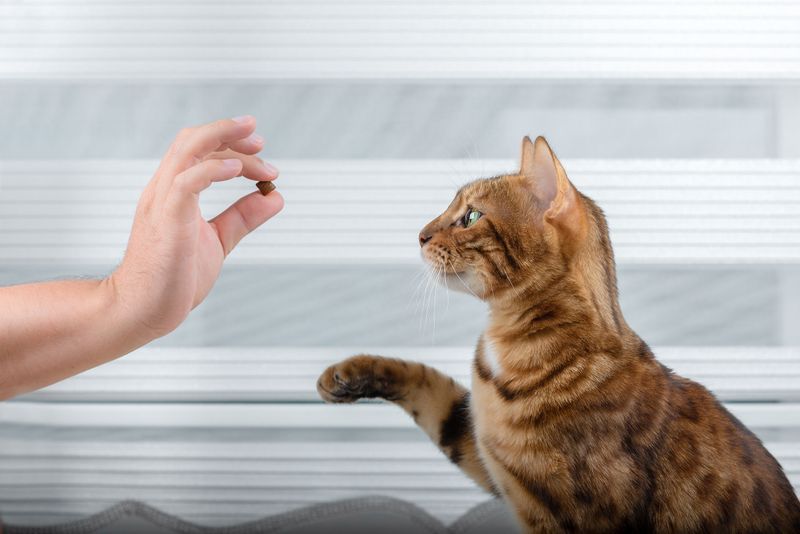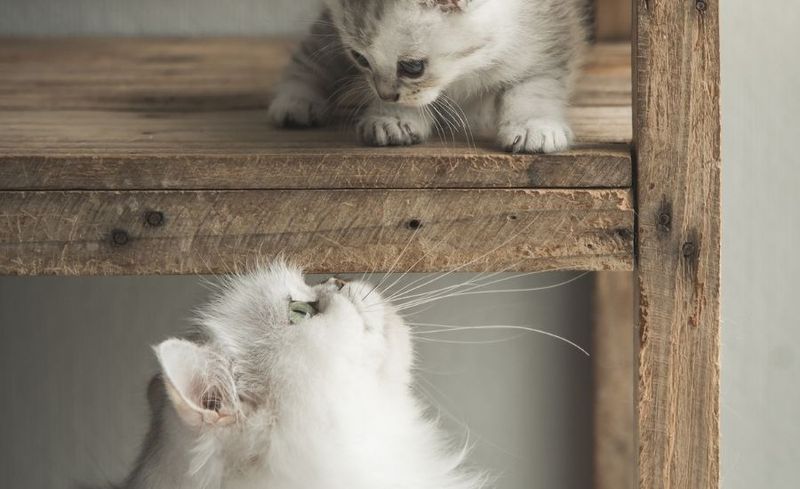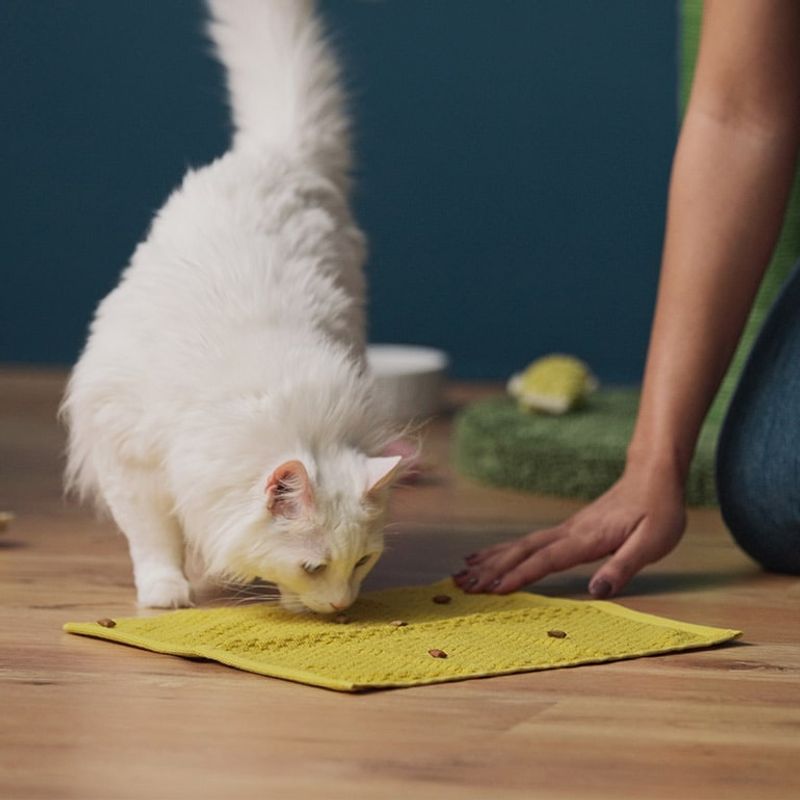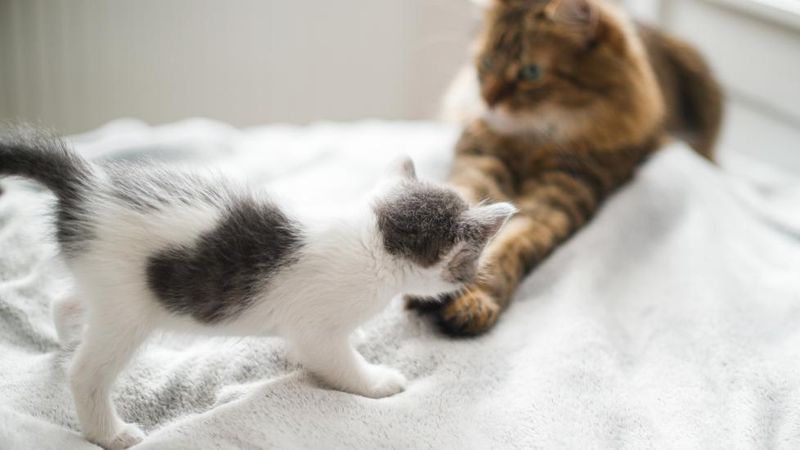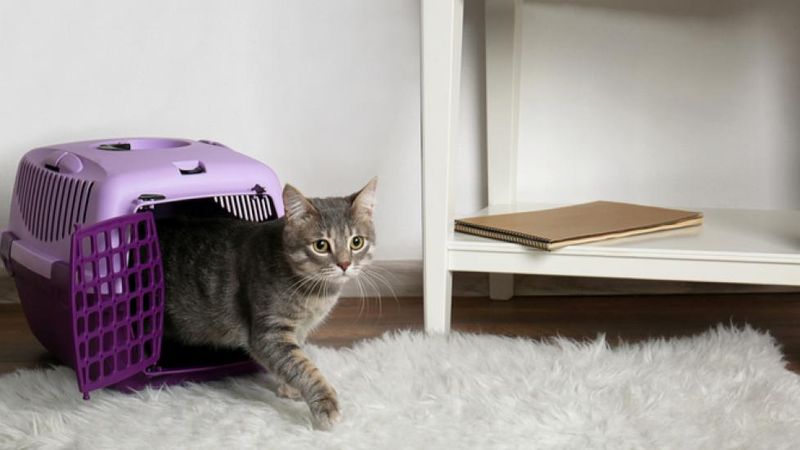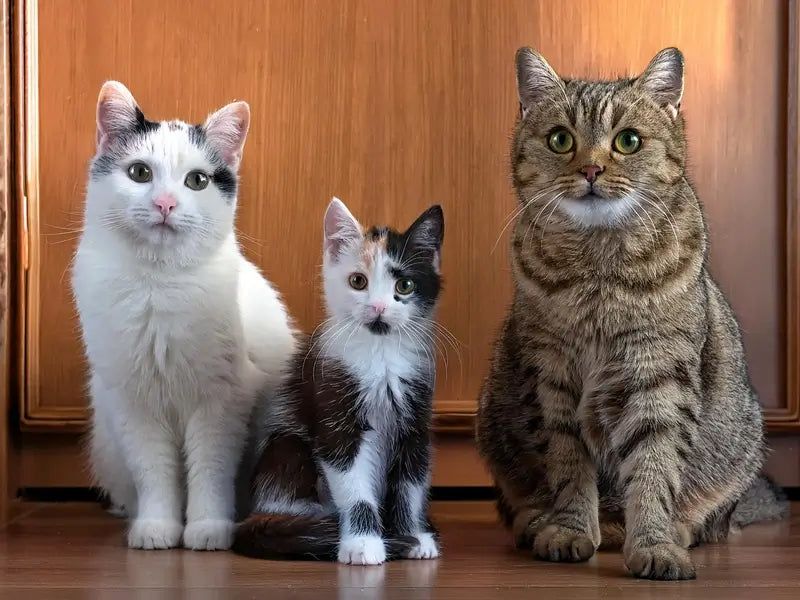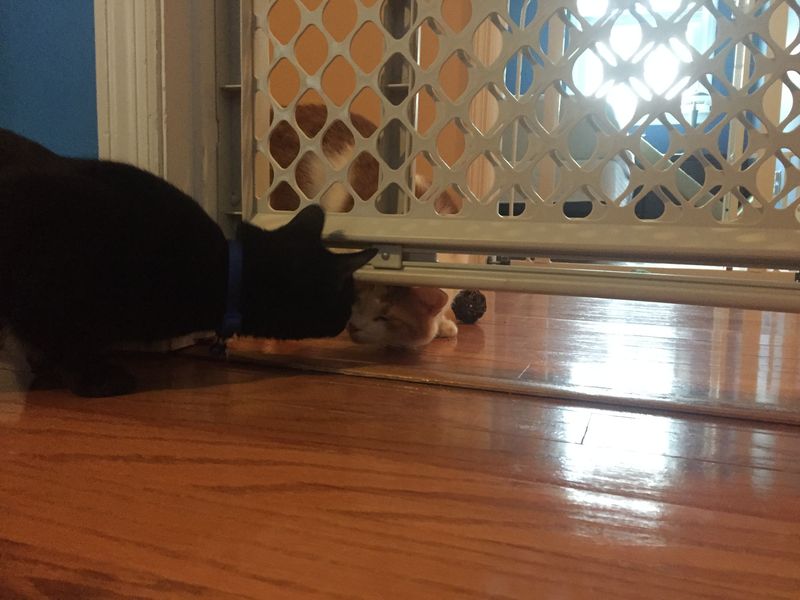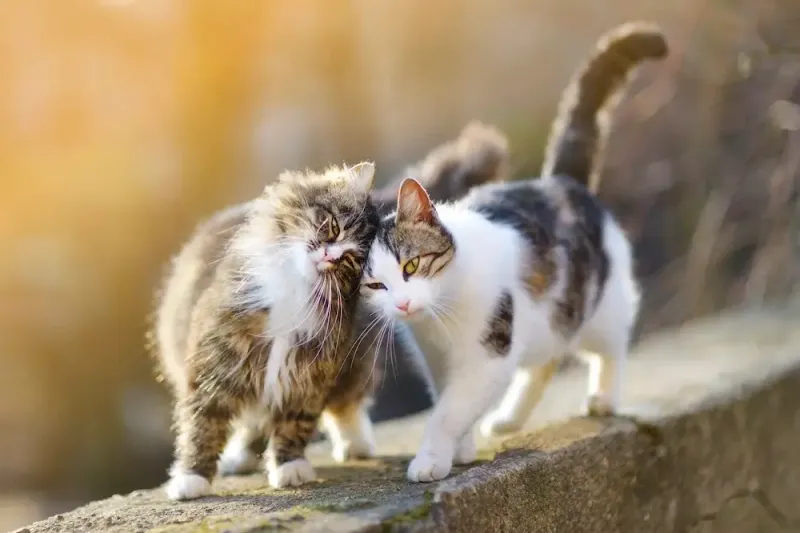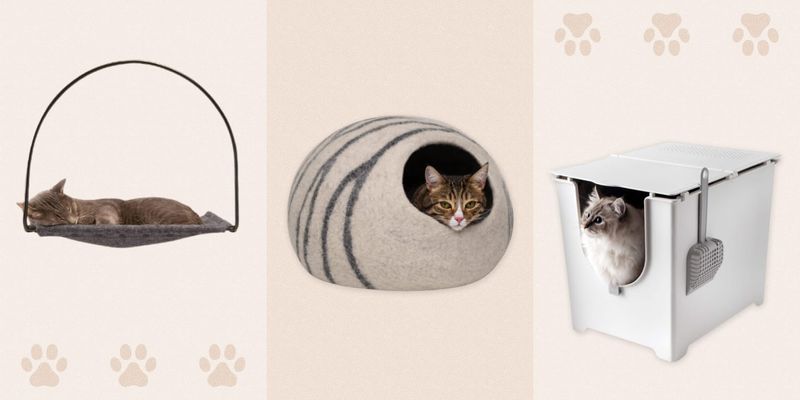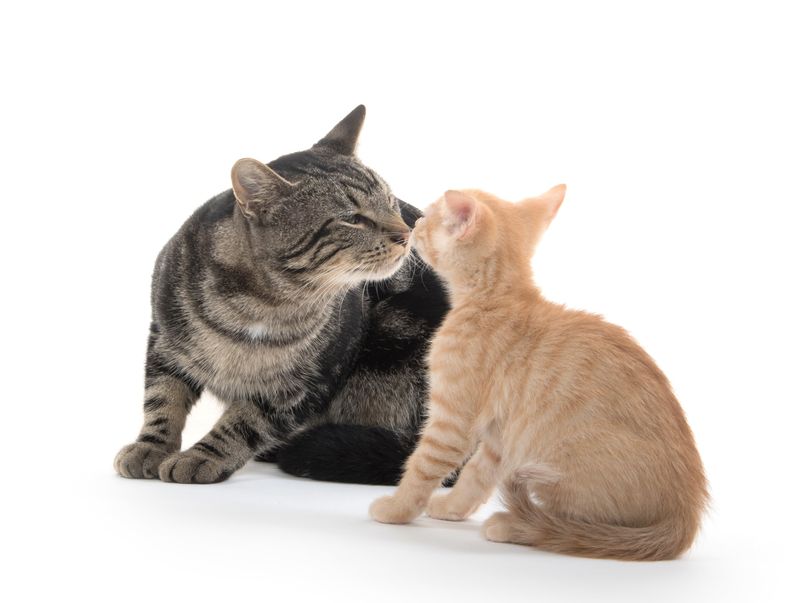📖 Table of Content:
- 1. Start with Scent Exchange
- 2. Create Separate Safe Spaces
- 3. Utilize a Baby Gate for Visual Introduction
- 4. Conduct Short, Supervised Meetings
- 5. Swap Bedding Frequently
- 6. Feed Cats on Opposite Sides of a Door
- 7. Use Interactive Toys to Encourage Play
- 8. Gradually Increase Shared Time
- 9. Provide High Perches and Hiding Spots
- 10. Use Feliway or Pheromone Diffusers
- 11. Observe Body Language Closely
- 12. Reward Positive Interactions
- 13. Practice Patience and Flexibility
- 14. Engage with Positive Reinforcement Training
- 15. Introduce Cats in Neutral Territory
- 16. Introduce New Scents Gradually
- 17. Maintain Consistent Routines
- 18. Introduce Cats Through Crate or Carrier
- 19. Provide Individual Attention to Each Cat
- 20. Use Visual Cues to Trigger Curiosity
- 21. Gradual Integration Over Weeks
- 22. Ensure All Cats Have Personal Items
- 23. Consult a Professional if Needed
Integrating a new kitten into a household with existing cats can be a delicate process. The following 23 strategies offer insightful and varied approaches to ensure a smooth transition. Each method is designed to build trust and compatibility among your feline companions.
1. Start with Scent Exchange
Begin by sharing scents between the new kitten and your resident cats. Place a blanket or toy that carries the scent of one cat in the other’s space. This subtle introduction helps them recognize each other before meeting face-to-face. Cats rely heavily on smell, so this step is crucial. It may seem simple, but scent exchange lays the groundwork for a peaceful coexistence. Consider rotating these items regularly and observing how each cat reacts. This interaction sets the stage for their first visual encounter, creating an initial bond based on familiarity rather than confrontation.
2. Create Separate Safe Spaces
Ensure your new kitten has a secure area where it can retreat. This space should include essentials like food, water, litter, and toys. It’s important for the kitten to feel comfortable and safe. This separation also allows existing cats to explore the new member’s scent without pressure. Gradually, let the cats swap spaces for brief periods. This controlled exposure helps reduce territorial behavior and encourages curiosity. As both parties grow more comfortable, the boundaries can slowly be relaxed, paving the way for more direct interactions in a neutral area.
3. Utilize a Baby Gate for Visual Introduction
Set up a baby gate to allow visual contact without physical interaction. This strategy lets existing cats see the newcomer, fostering curiosity without threat. The gate provides a physical barrier, preventing any hasty or aggressive interactions. With time, both cats can grow accustomed to each other’s presence. You may observe playful pawing or sniffing through the bars. This gradual exposure builds a sense of normality and reduces initial apprehension. Remember to reward positive behavior with treats and affection to reinforce peaceful coexistence.
4. Conduct Short, Supervised Meetings
Facilitate brief, monitored meetings in a neutral area. These interactions should be positive and stress-free, with toys and treats available. Keep these sessions short to prevent overstimulation or conflict. Monitor body language closely, looking for signs of aggression or fear. Gradually increase the duration as comfort levels rise. The goal is to establish a friendly rapport and prevent territorial disputes. Over time, these meetings will promote trust and familiarity. Consistent supervision ensures safety and helps foster a harmonious relationship between all feline members of the household.
5. Swap Bedding Frequently
Regularly exchange bedding between your new kitten and existing cats. This practice helps them grow accustomed to each other’s scent. Each swap acts as a subtle introduction, allowing the cats to accept the new presence gradually. Observe how each cat reacts to these scent exchanges; positive reactions can indicate readiness for closer interaction. This approach minimizes stress and territorial aggression. As the cats become more familiar with the new scents, their comfort levels will increase, easing the transition towards face-to-face meetings.
6. Feed Cats on Opposite Sides of a Door
Feeding cats near each other, but separated by a door, creates positive associations with the presence of the other cat. The sound and smell of eating together, without direct interaction, can lessen tension and build comfort. Over time, this routine helps the cats associate each other’s presence with positive experiences. Gradually move the feeding stations closer to the door. This progression encourages curiosity and cooperation, vital steps towards eventual face-to-face introductions. This strategy leverages the natural comfort of mealtime to foster a peaceful relationship.
7. Use Interactive Toys to Encourage Play
Introduce interactive toys to engage both the new kitten and the resident cats. Shared play can break the ice and reduce stress. Toys like feather wands or laser pointers can entice mutual interest, encouraging friendly interaction without direct contact. This tactic provides a shared outlet for energy, fostering positive associations with each other’s presence. Observe their reactions and adjust playtime to suit comfort levels. Over time, mutual play can become a foundational part of their relationship, enhancing both bonding and coexistence. Ensure the play environment remains safe and enjoyable.
8. Gradually Increase Shared Time
Slowly extend the time your cats spend together in shared spaces. Begin with short, peaceful periods and gradually increase as they grow more comfortable. Monitor their behavior closely, ensuring interactions remain positive. With each session, the cats will learn to coexist peacefully, reducing territorial instincts. This gradual progression allows them to build trust naturally, without feeling rushed or threatened. The key is patience and observation; adjust the pace based on the comfort of both cats. A harmonious household is the ultimate goal, achieved through these sensitive, incremental steps.
9. Provide High Perches and Hiding Spots
Creating vertical spaces and hideaways gives cats a sense of security and control. High perches allow them to observe from a safe distance, while hiding spots offer refuge. These features can ease the stress of introductions by offering choices for retreat or observation. Cats appreciate being able to withdraw if needed, reducing potential conflicts. A variety of spaces allows them to regulate their interactions, fostering a comfortable environment for all. Encourage exploration of these areas with treats or toys to promote positive experiences.
10. Use Feliway or Pheromone Diffusers
Pheromone diffusers like Feliway can create a calming atmosphere, reducing stress during introductions. These products mimic natural cat pheromones, promoting a sense of security and well-being. Place diffusers in areas where the cats spend the most time to maximize their effect. While not a standalone solution, they can complement other introduction strategies. Observe how your cats respond and adjust as needed. The goal is a peaceful environment that supports positive interactions. Combined with other methods, pheromones can ease the transition and help establish a harmonious household.
11. Observe Body Language Closely
Understanding feline body language is essential during introductions. Observe signs of relaxation or aggression, such as tail position and ear movement. This awareness helps gauge comfort levels and prevents conflicts. Positive signals like purring or slow blinking indicate acceptance, while hissing or growling suggests caution. Use this knowledge to adjust the pace of introductions, ensuring both cats feel secure. Recognizing these cues allows for timely interventions, promoting a smoother transition. Each cat’s comfort should guide your approach, leading to a harmonious coexistence.
12. Reward Positive Interactions
Reinforce positive behavior with treats and affection. Rewarding cats for calm interactions encourages continued good behavior. Cats learn quickly when their efforts are acknowledged, fostering a positive association with the new companion. Use favorite treats or gentle petting as rewards. This practice not only strengthens bonds but also boosts confidence. Gradually, positive reinforcement builds a foundation of trust and cooperation. Consistent encouragement helps create a peaceful environment, setting the stage for lasting friendship. The goal is a happy, harmonious household where all cats feel valued and secure.
13. Practice Patience and Flexibility
Introducing a new kitten takes time and patience. Every cat is unique, requiring flexibility in your approach. Observe how they interact and adapt strategies as needed. Recognize that some cats may take longer to adjust. Celebrate small victories and avoid rushing the process. Patience ensures a less stressful transition for both pets and owners. Keep the environment calm and supportive, providing reassurance when needed. This thoughtful approach lays the foundation for a lasting bond, allowing each cat to find their place within the household naturally.
14. Engage with Positive Reinforcement Training
Utilize positive reinforcement training to build trust and cooperation among cats. Training sessions should be brief and rewarding, focusing on positive behavior. Use clickers or verbal cues to signal success, followed by treats or affection. This method encourages understanding and compliance, easing the introduction process. Training together can foster a sense of teamwork, reducing tension. It’s an effective way to promote peaceful coexistence and mutual respect. Tailor the training to each cat’s temperament, ensuring a personalized approach. The result is a harmonious household where all members feel valued.
15. Introduce Cats in Neutral Territory
Choose a neutral space for initial meetings to prevent territorial behavior. A room with no established scent allows cats to interact without feeling defensive. This strategy encourages natural curiosity and exploration. Monitor their reactions closely, providing guidance and reassurance as needed. Use toys or treats to create positive distractions. Neutral territory helps level the playing field, reducing the risk of conflict. As familiarity grows, interactions will become more relaxed and enjoyable. This approach fosters a harmonious introduction, paving the way for a peaceful coexistence in shared spaces.
16. Introduce New Scents Gradually
Gently introduce new scents by placing a cloth or towel carrying the kitten’s scent near your existing cat. This gradual exposure builds familiarity without pressure. Observe the resident cat’s reaction to gauge comfort levels. Positive responses indicate readiness for closer introductions. This technique helps minimize stress and territorial behavior. By gradually blending their environments, you lay the groundwork for future interactions. The aim is to create a cohesive living space where both cats feel comfortable and secure, ensuring a smoother transition and lasting harmony.
17. Maintain Consistent Routines
Consistency is key when introducing a new kitten. Maintain established routines for feeding, play, and rest, as cats thrive on predictability. This stability provides reassurance during the transition. Gradually incorporate the new kitten into these routines, allowing both cats to adjust comfortably. Consistent schedules help minimize stress and promote a sense of security. Over time, shared activities will become a natural part of their daily lives. This method fosters a harmonious household where all cats feel at ease, ensuring a smooth integration and lasting companionship.
18. Introduce Cats Through Crate or Carrier
Use a crate or carrier to introduce the new kitten safely. This method allows the existing cat to approach and investigate without direct contact. The confined space provides security for the kitten, preventing overwhelming introductions. Observe their behavior closely and adjust the pace based on comfort levels. This approach helps build familiarity while maintaining safety. As trust grows, gradually allow more freedom. The carrier acts as a safe haven, ensuring a positive introduction experience. This strategy supports a gradual transition, leading to a peaceful coexistence.
19. Provide Individual Attention to Each Cat
Ensure each cat receives individual attention to prevent jealousy during introductions. Spend quality time with each pet, reinforcing their importance in the household. This practice helps maintain balance and reduces competition for affection. Use playtime, grooming, or simple cuddling as opportunities to bond. Individual attention fosters confidence and security, easing the integration of the new member. By acknowledging each cat’s unique needs, you create a supportive environment that encourages harmony. This approach ensures all cats feel valued, leading to a cohesive, happy household.
20. Use Visual Cues to Trigger Curiosity
Leverage visual stimuli to spark curiosity and encourage interaction. Play videos of birds or other engaging content that cats find interesting. This shared experience can become a bonding activity, diverting attention from initial apprehensions. Observe their reactions and use these moments to foster positive associations. Visual cues offer a unique way to build common ground, enhancing the introduction process. As cats engage with these stimuli, they may become more inclined to interact positively, paving the way for a smoother integration into the household.
21. Gradual Integration Over Weeks
Plan a gradual integration over several weeks to ensure a smooth transition. Slowly increase the time cats spend together, monitoring their comfort levels. This extended approach allows for adjustments based on each cat’s reaction, preventing stress and conflicts. Celebrate small milestones and adapt strategies as needed. Patience and perseverance are key to successful integration. By allowing time for natural adaptation, you foster a harmonious household where all cats coexist peacefully. Remember, each cat is unique, and a thoughtful approach ensures a lasting bond.
22. Ensure All Cats Have Personal Items
Provide each cat with personal items like beds, bowls, and toys to establish a sense of ownership. These items create familiar spaces where cats feel secure. Ensuring each pet has its own resources prevents territorial disputes and promotes harmony. Personal items serve as comfort zones, offering retreat when needed. This practice fosters a sense of belonging and reduces competition. By acknowledging each cat’s individuality, you create a balanced environment. Over time, this approach leads to a peaceful household where all members feel content and valued.
23. Consult a Professional if Needed
If challenges arise, consider consulting a professional cat behaviorist. An expert can provide tailored strategies and insights, addressing specific issues effectively. Professional guidance can be invaluable in complex situations, ensuring a peaceful integration. By understanding each cat’s unique needs and behaviors, a behaviorist can offer solutions that promote harmony. This step is especially beneficial for resolving conflicts or persistent stress. Consulting a professional demonstrates commitment to a harmonious household, prioritizing the well-being and happiness of all feline members.
